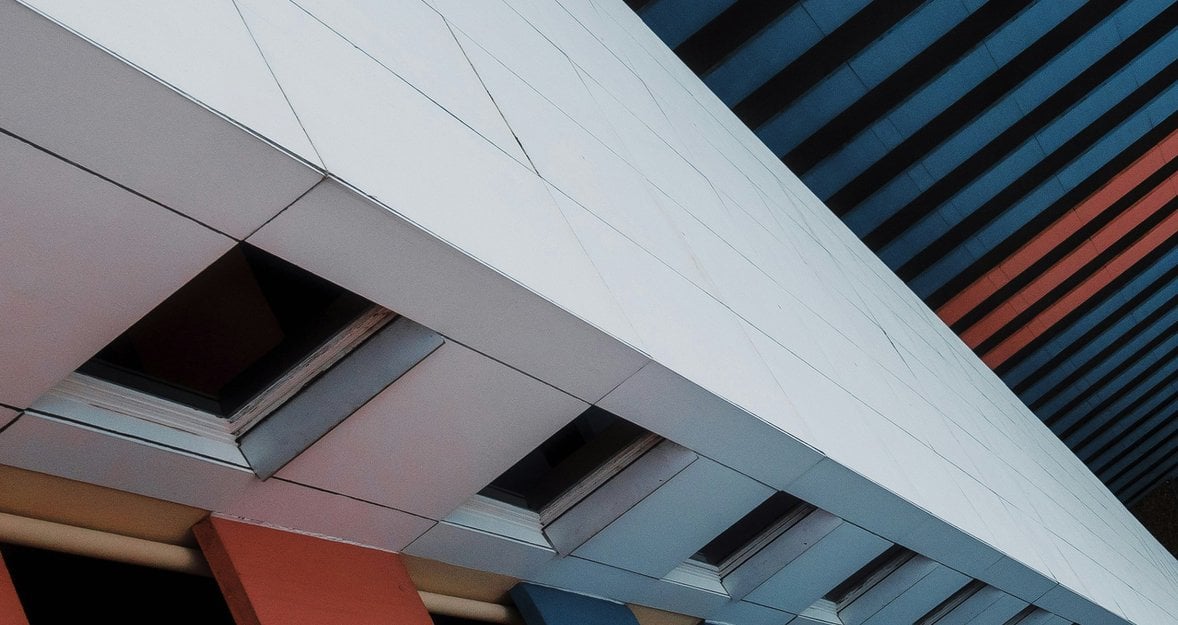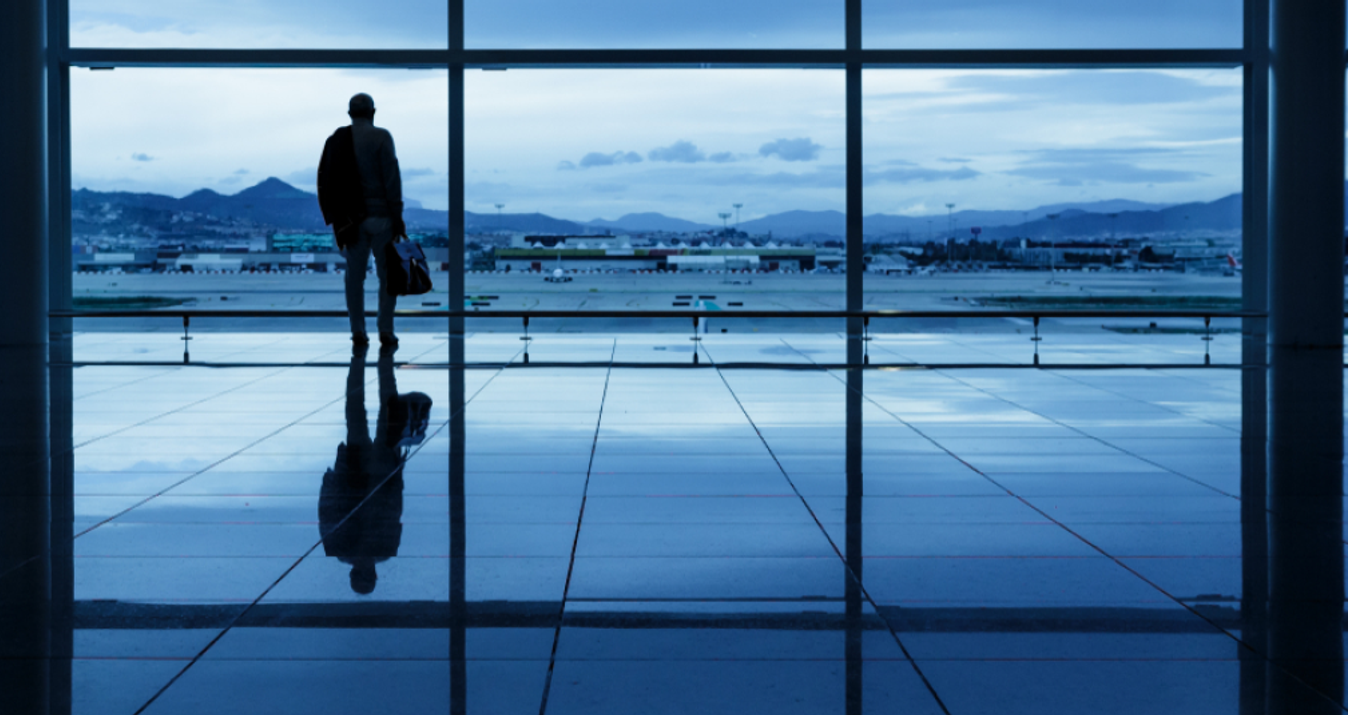Powerful Composition Techniques For City Perspective Photography
September 19, 2024

Elevate your urban photography skills! Master lens selection and compositional techniques to capture the city's beautiful shapes and lines.
The city is full of fascinating geometric shapes, lines, and perspectives that photographers can highlight in their work. The beauty of city photography lies in the endless opportunities it offers to capture a wide range of unique compositions. If you're looking to start or improve your urban photography, you’re in the right place.
First, we’ll make sure you have the right lens and understand how each type can significantly impact your compositional approach. Then, we’ll take a look at a range of compositional techniques that will help you capture the beauty of the urban environment.
There’s so much to enjoy in capturing the city, so without further ado, let’s get started!
Choosing the Essential Gear
 Before jumping into how to take great city perspective photos, let’s first ensure you have the essential gear to capture these moments. In this genre of photography, the lens you use will be important to the type of perspectives you wish to capture.
Before jumping into how to take great city perspective photos, let’s first ensure you have the essential gear to capture these moments. In this genre of photography, the lens you use will be important to the type of perspectives you wish to capture.
Wide-Angle Lens
This will be your go-to choice for capturing the expanse of a cityscape, the dizzying heights of skyscrapers, and all the details of the street. There can be a lot to capture in a single frame, and a wide-angle lens will be the best option to help you achieve this. It also offers greater depth, making the city feel more immersive. Having a wide-angle lens in your kit bag will ensure you're equipped to capture a great range of perspectives in the city.
Telephoto Lens
If you’re looking to focus on specific details, a telephoto lens will allow you to zoom in on elements of the city to showcase geometric shapes and designs. While it’s obvious that you’ll be able to capture details from a distance, another key advantage of a telephoto lens is image compression. As you zoom in, the image compresses, bringing distant subjects closer. This makes buildings in the background appear much larger than they actually are, helping to create a grand sense of scale. You can use this technique as both a compositional tool and a creative one.
Your Go-To for Perfecting Crop and Perspective
Explore In Luminar Neo!Prime Lens
If your goal is to capture the city with greater clarity and sharpness, a prime lens will help you achieve this. A prime lens has a fixed focal length, with many street photographers favouring 35mm or 50mm. It may not be as versatile as a telephoto lens, but it allows you to capture symmetrical compositions and other features of the city at street level with tack-sharp results.
Tilt-Shift Lens
This particular lens is favoured by architectural photographers for a specific reason. With a regular lens, the vertical lines of tall buildings can become distorted, especially when shooting from a low angle, causing the buildings to appear as if they’re tilting inward. If you’re aiming for precise straight lines, a tilt-shift lens allows you to control the plane of focus and correct perspective distortion. While this lens isn’t absolutely necessary, it’s a great addition to your kit if you want more control over architectural shots.
So, Which Lens Should You Choose?
Whichever lens you choose to shoot with, you’ll still be able to capture a wide range of perspectives in the city. A wide-angle lens may be the best choice for covering most compositional techniques, but a telephoto lens will allow you to capture distant details. Prime lenses offer sharp results but are limited by their fixed focal length, and a tilt-shift lens will help correct the perspective distortion that other lenses may introduce when shooting tall buildings from a low angle.
City Perspective Techniques
 Okay, now that we have a handle on the right equipment, let’s move on to the most interesting question: how do you photograph a city to make it truly stand out?
Okay, now that we have a handle on the right equipment, let’s move on to the most interesting question: how do you photograph a city to make it truly stand out?
The city has so much to offer when it comes to compositional techniques. With so much going on, it can be hard to remember what to look out for, so here is a handy checklist for you to refer to during your photowalk.
1. Leading Lines
One compositional element that can improve your image is leading lines. They are everywhere in urban areas, and once you recognize their presence, you’ll start featuring them in many of your shots. Leading lines help guide the viewer’s eye towards your subject or around the frame. Not only that, but they also create depth as the viewer looks deeper into your shot. These aren’t literal lines drawn into your image, so let’s see how to use the urban environment for this technique.
- How to incorporate: In the city, so much can be used as a leading line—streets, bridges, building shapes, rivers, railways, cranes, and more. You’re looking for elements that direct attention toward the key subject of your frame or emphasize the depth of your image.
2. Symmetry and Patterns
While out on your photowalk, you may notice the symmetry and patterns of buildings and walls. These can create balanced images when framed carefully. This compositional technique offers visual satisfaction to the viewer.
- How to incorporate: Look for buildings with symmetrical designs and try to frame your shot with even proportions. You might also find patterns in architectural features or wall decorations. Additionally, look for the placement of plants or urban elements that are evenly spaced, providing you with a symmetrical composition.
Exclusive Tools of Endless Possibilities in One AI Editor
Explore Now!3. Frame within a Frame
 Your image is already a frame, but consider having another frame within it, surrounding a specific subject or scene. A frame within a frame is a strong technique that emphasizes your subject and draws immediate attention to it.
Your image is already a frame, but consider having another frame within it, surrounding a specific subject or scene. A frame within a frame is a strong technique that emphasizes your subject and draws immediate attention to it.
- How to incorporate: You can use doorways, windows, arches, and other architectural features as natural frames. For example, if you find a beautiful doorway with a person standing within it, the decorative elements of the doorway frame the subject, drawing attention and emphasizing its importance.
4. Depth and Layers
We’ve already discussed how leading lines add depth to an image, but there are other ways as well. Depth allows you to build a scene that doesn’t immediately reveal everything to the viewer. They can gaze beyond the foreground, discovering details in the middle ground and background, which encourages them to spend time with your image.
- How to incorporate: Beyond leading lines, look for cityscapes that offer layers—buildings, rivers, and other urban features that help build depth. On a smaller scale, modern architecture with layers of walls and windows naturally creates depth. For this technique to work, you’ll need a clear foreground, middle ground, and background.
5. Scale
One of the defining features of a modern city is its towering skyscrapers. These giant buildings offer an opportunity to showcase the scale of the city by comparing them with ground-level features like people or smaller buildings. This technique adds a sense of awe and wonder to your image.
- How to incorporate: As mentioned in the essential gear section, a telephoto lens will compress the image, bringing background buildings closer and making them appear taller compared to subjects on the ground. Showcasing scale works best when you feature something much smaller within the frame, helping the viewer understand the vastness of the city.
6. Rule of Thirds
 A visually engaging image often follows the rule of thirds. Our brains are naturally drawn to compositions with odd-numbered elements. For instance, a composition with three apples is considered more aesthetically pleasing than an image with two. This rule applies to city photography as well.
A visually engaging image often follows the rule of thirds. Our brains are naturally drawn to compositions with odd-numbered elements. For instance, a composition with three apples is considered more aesthetically pleasing than an image with two. This rule applies to city photography as well.
- How to incorporate: Compose your frame with three distinguishable sections, either vertically or horizontally. For example, one portion might include a riverbank with buildings, the center portion could feature the river, and the final portion could include a person walking along the river. Additionally, having subjects face towards the center of the frame creates a stronger composition, giving them space to "move" into and making the image more visually pleasing.
7. Minimalism
The chaotic nature of the city can make for busy, vibrant frames, but taking a minimalist approach by finding calm within the urban environment is a refreshing choice. Minimalist photography involves stripping away distractions to focus on a solitary subject.
- How to incorporate: Begin with a single subject, keeping the composition as minimal as possible. Your background should be simple, like a blank wall or an open sky. Experiment with your approach to ensure you're still capturing urban elements while keeping the frame uncluttered and free of distractions.
8. Reflections
Reflections offer a creative approach to capturing the city, adding layers to your image and resulting in a unique and visually interesting composition.
- How to incorporate: Glass skyscrapers are ideal for this technique, providing large reflective surfaces that capture a broad portion of the city. On a smaller scale, you can use shop windows and other reflective surfaces in the city to reflect more intimate parts of the urban landscape. An interesting aspect of this approach is that you can combine two compositional techniques—reflection and the frame within a frame—by incorporating reflections into a natural frame, such as a window or doorway. Keep an eye out for intriguing elements reflected in the glass around the city.
The Bottom Line
 The city has so much to offer, and as a photographer, you have the opportunity to showcase its unique perspectives in all their beauty, from the sleek design of buildings to the vast expanse of cityscapes. Before heading out to capture the city, make sure you choose the right lens, as each can provide a different perspective. A wide-angle lens offers a versatile range, allowing you to capture as much of the scene as possible in a single frame, while a telephoto lens enables you to zoom in on specific aspects of the environment and compress the scene, creating a sense of scale.
The city has so much to offer, and as a photographer, you have the opportunity to showcase its unique perspectives in all their beauty, from the sleek design of buildings to the vast expanse of cityscapes. Before heading out to capture the city, make sure you choose the right lens, as each can provide a different perspective. A wide-angle lens offers a versatile range, allowing you to capture as much of the scene as possible in a single frame, while a telephoto lens enables you to zoom in on specific aspects of the environment and compress the scene, creating a sense of scale.
There’s also a wide range of compositional techniques that can result in high-quality urban photography. Look out for leading lines naturally occurring in roads, buildings, and other city elements. You can also use frames within frames by incorporating windows, doorways, and archways to focus attention on specific parts of the scene. Take your time while walking around, experiment with creative approaches, and enjoy the process. By doing so, you’ll be left with powerful images that perfectly capture the beauty and unique perspectives of the city.





